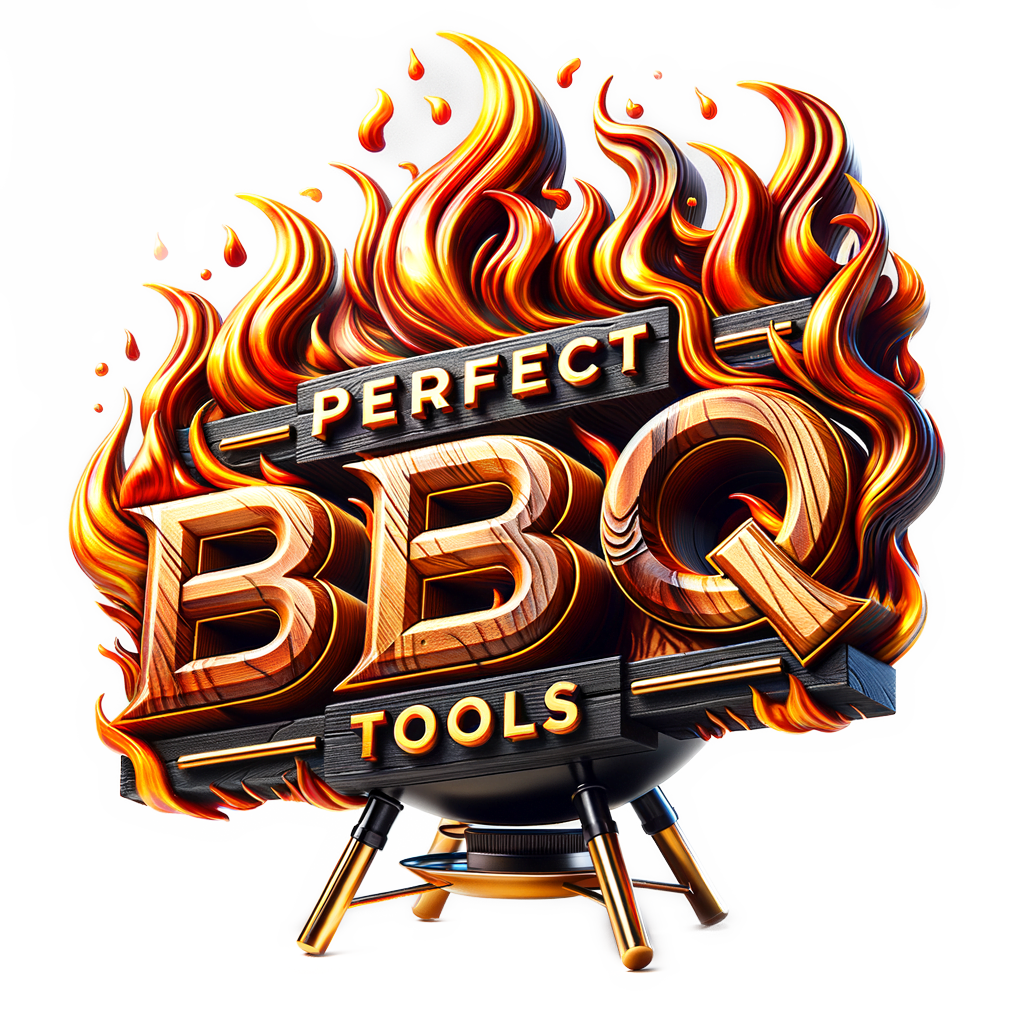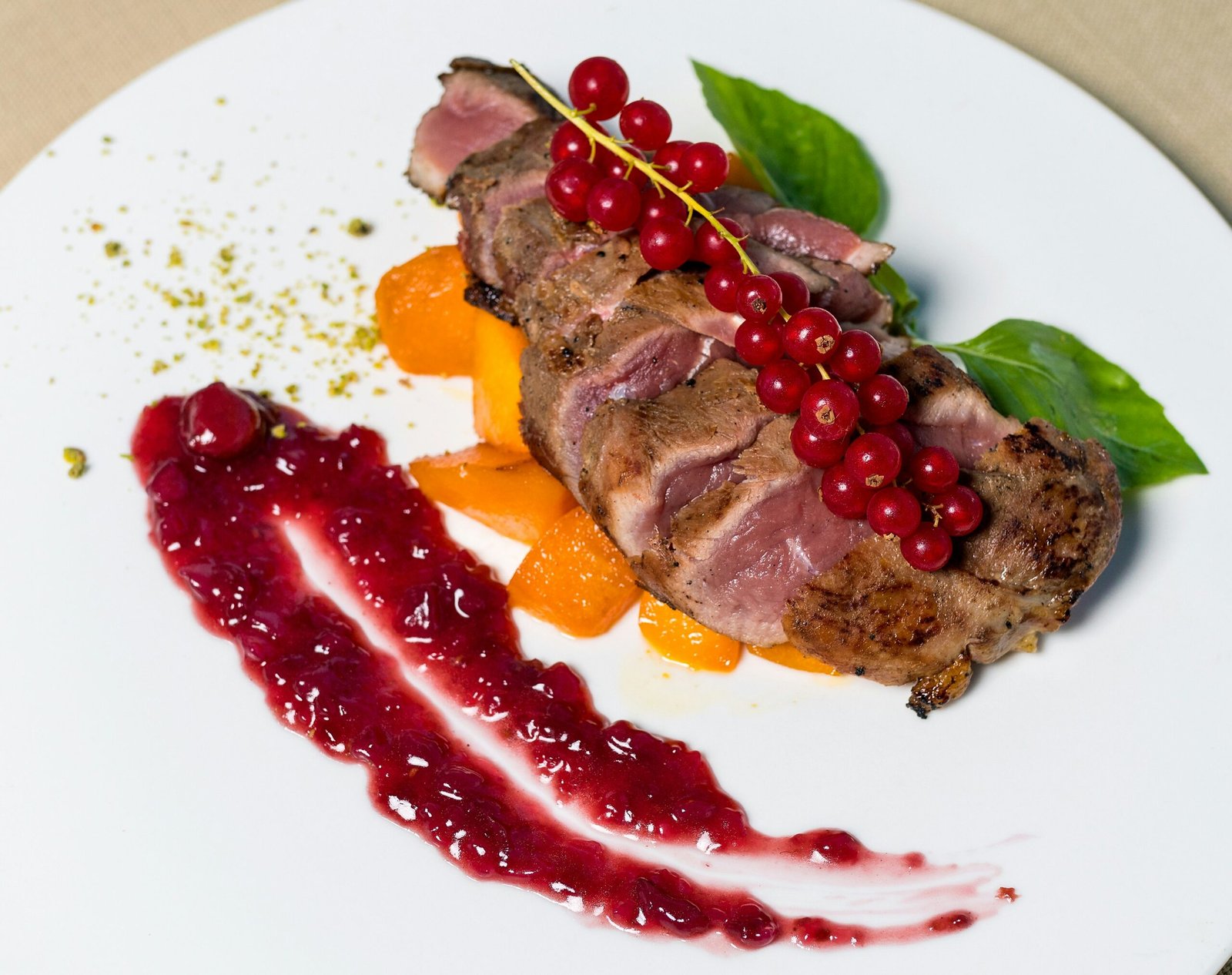Imagine standing in your backyard, the smell of sizzling burgers filling the air as you wait eagerly for them to cook to perfection. But have you ever wondered how exactly your barbeque grill produces the heat that transforms raw ingredients into mouthwatering meals? In this article, we will explore the fascinating process behind the scenes of barbeque grilling and unveil the secrets of how your grill generates the perfect cooking temperature. Get ready to unravel the mysteries and gain a deeper understanding of the science behind that delectable sear on your favorite foods.
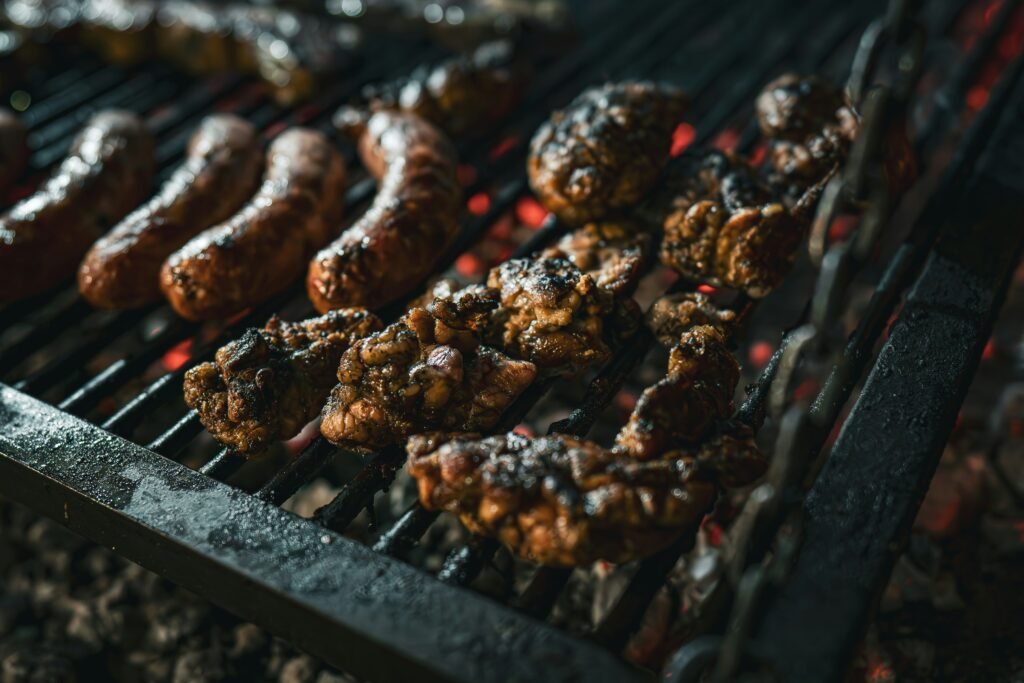
Types of Grills
Gas Grills
Gas grills are a popular choice among grill enthusiasts due to their convenience and ease of use. These grills are powered by either propane or natural gas, which serves as the fuel source for generating heat. Gas grills typically have multiple burners that ignite the gas, producing a steady flame for cooking. The heat output can be adjusted by regulating the flow of gas and controlling the burner knobs. Gas grills offer efficient heat distribution and are known for providing consistent heat across the cooking surface.
Charcoal Grills
Charcoal grills are a classic and beloved option for those who enjoy the smoky flavor that comes from grilling with charcoal. These grills use charcoal briquettes or lump charcoal as the heat source. The heat is produced through the combustion of charcoal, which releases radiant heat into the grill. Charcoal grills often feature air vents that allow for airflow control, enabling cooks to adjust the temperature. They offer the versatility of both direct and indirect grilling methods, allowing for various cooking techniques.
Electric Grills
Electric grills are a convenient and efficient option, especially for those who live in apartments or areas where open flame grilling is restricted. These grills utilize resistive heating elements to generate heat. When the grill is turned on, electricity flows through these heating elements, which then produce heat. Electric grills are known for their even heat distribution and precise temperature control. They are easy to use and require minimal maintenance, making them an excellent choice for those seeking a hassle-free grilling experience.
Portable Grills
Portable grills are a great solution for outdoor enthusiasts, campers, and those who enjoy grilling on the go. These grills come in various sizes and can be powered by a variety of fuel sources, such as propane, charcoal, or butane. Portable grills are designed to be compact and lightweight, making them easy to transport. Despite their smaller size, they still provide sufficient heat for cooking delicious meals on the road. They offer a range of heat transfer mechanisms depending on the type of fuel used, ensuring versatility and convenience while grilling outdoors.
Kettle Grills
Kettle grills, also known as kettle barbecue grills, are a popular choice for both novice and experienced grillers. These grills feature a rounded, kettle-shaped body that aids in heat circulation. Kettle grills commonly use charcoal as the heat source, and the heat is distributed through convection. The design of the kettle grill allows for effective temperature control, as the vents at the bottom and top of the grill enable airflow adjustments, regulating the heat and ensuring even cooking. Kettle grills are versatile and can be used for various grilling techniques.
Pellet Grills
Pellet grills are a modern innovation that combines the convenience of a gas grill with the smoky flavor of a charcoal grill. These grills use wood pellets as the fuel source, which are automatically fed into a fire pot. The pellets are ignited through an induction fan, creating combustion and producing heat. The heat is then disseminated throughout the grill, providing even cooking. Pellet grills feature a digital temperature controller that allows users to set their desired temperature, ensuring precise and consistent heat regulation during grilling.
Heat Production Process in Grills
Combustion Principles
The combustion process is vital for heat production in grills. It involves the burning of fuels, such as propane, natural gas, charcoal, or wood pellets, to generate the necessary heat for cooking. Combustion occurs when the fuel combines with oxygen in the presence of a spark or ignition source. This chemical reaction releases energy in the form of heat, which is then transferred to the cooking surface. Understanding the combustion principles is crucial for effective use of different types of grills.
Radiant Heat Transfer
Radiant heat transfer plays a significant role in grilling. In this heat transfer mechanism, heat energy is emitted in the form of electromagnetic waves, known as infrared radiation. The heat radiates from the heat source, whether it be a flame or heated elements, to the food being cooked. Radiant heat transfer is responsible for the direct searing and browning of the food’s surface, giving it those appealing grill marks. It is an essential factor in achieving the desired texture and flavor when grilling.
Conduction Heat Transfer
Conduction heat transfer occurs when heat is transferred from one object to another through direct contact. In grilling, this occurs when the cooking surface, such as a grill grate, comes into contact with the food. The heat from the grill grate is conducted through the food, cooking it evenly. The thickness and conductivity of the cooking surface affect the efficiency of conduction heat transfer. Well-maintained and clean grill grates are essential for optimal conduction and even cooking.
Convection Heat Transfer
Convection heat transfer involves the transfer of heat through the movement of air or liquid. In grilling, convection occurs when the heated air inside the grill circulates around the food. This helps to cook the food evenly, as the hot air envelops the ingredients, ensuring consistent heat distribution. The circulation of hot air can be regulated through vents or other airflow mechanisms in the grill. Convection heat transfer is vital in achieving consistent and thorough cooking, especially for larger cuts of meat or for indirect grilling methods.
Gas Grills and Heat
Understanding the Role of Propane or Natural Gas
The heat production in gas grills is dependent on propane or natural gas, which serves as the fuel source. Propane is a common choice for gas grills as it is readily available and easy to use. Natural gas, on the other hand, requires a direct connection to a natural gas line, providing a continuous fuel source. Both propane and natural gas burn cleanly and efficiently, producing high temperatures ideal for grilling. The use of these gases ensures consistent heat output, allowing for precise temperature control during cooking.
Ignition and Regulation of Heat
Gas grills feature ignition systems that provide a spark to ignite the gas as it flows out of the burners. This ignition process is crucial for starting the heat production in gas grills. Once ignited, the heat output can be regulated by adjusting the burner knobs. By controlling the flow of gas, grillers can increase or decrease the flame intensity, thereby adjusting the heat level. This gives users the flexibility to cook a wide range of foods at varying temperatures, providing versatility in grilling.
The Role of Burners and Flame Tamers in Heat Distribution
Gas grills often feature multiple burners that aid in heat distribution across the cooking surface. These burners are responsible for igniting the gas and producing flames that generate the heat. Flame tamers, also known as flavorizer bars or heat plates, are placed above the burners to prevent flare-ups and distribute heat evenly. Flame tamers help to protect the burners from grease and drippings, ensuring their longevity. They also contribute to the smoky flavor infusion by vaporizing the drippings and creating an aromatic smoke.
Charcoal Grills and Heat
How Charcoal Burns and Releases Heat
Charcoal grills rely on the combustion of charcoal to generate heat. Charcoal is made from partially burned wood and other organic materials. When heated, charcoal undergoes a process known as pyrolysis, where it breaks down into volatile gases and leaves behind carbon. As these volatile gases mix with oxygen, they combust and release heat energy. The heat produced by charcoal grills is intense and ideal for high-temperature grilling, allowing for searing and quick cooking.
Role of Air Vents in Temperature Control
Charcoal grills often feature air vents, such as dampers or ash pans, which play a crucial role in temperature control. These vents allow for the regulation of oxygen flow to the charcoal, affecting the intensity of the combustion and, consequently, the heat output. By adjusting the air vents, grillers can increase or decrease the airflow, thereby controlling the temperature inside the grill. This enables more precise cooking control, whether using direct or indirect grilling methods.
Direct and Indirect Grilling with Charcoal Grills
Charcoal grills offer the versatility of both direct and indirect grilling methods. Direct grilling involves placing the food directly above the hot charcoal, allowing for high-heat cooking, searing, and achieving those irresistible grill marks. Indirect grilling, on the other hand, involves setting up the coals on one side of the grill and placing the food on the opposite side. This creates an indirect heat zone, similar to an oven, allowing for slower cooking and smoking. The ability to switch between direct and indirect grilling makes charcoal grills a versatile option for various cooking techniques.
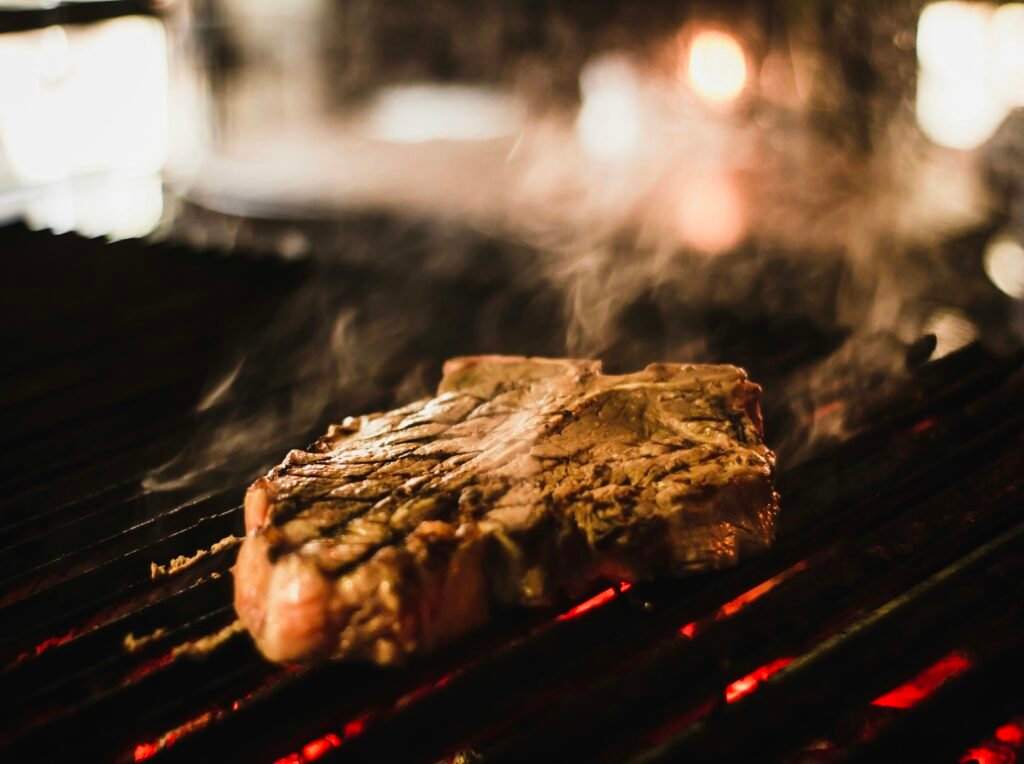
Electric Grills and Heat
The Role of Resistive Heating Elements
Electric grills utilize resistive heating elements to produce heat. These heating elements, typically made of materials like stainless steel or ceramic, convert electrical energy into heat energy through resistance. When an electric current passes through the heating elements, they generate heat, which is then transferred to the cooking surface. Resistive heating elements are known for their efficiency and ability to provide consistent heat output, making electric grills a reliable choice for precise cooking.
Heat Transfer in Electric Grills
Electric grills primarily rely on conduction and radiation for heat transfer. The resistive heating elements directly heat the cooking surface, such as a grill plate or griddle, through conduction. This process ensures even and uniform cooking as the heat is efficiently transferred to the food. In addition to conduction, electric grills also emit radiant heat, which helps in achieving the desired caramelization and searing on the food’s surface. Combined, these heat transfer mechanisms provide reliable and consistent heat for electric grilling.
Regulation of Desired Temperatures
Electric grills typically come with temperature control knobs or digital temperature controllers, allowing users to set their desired cooking temperature. With precise temperature regulation, electric grills offer consistency and ease of use. Whether grilling delicate fish or searing a steak, the ability to adjust and maintain the desired temperature ensures excellent results. This feature makes electric grills an excellent choice for those seeking convenience and control in their grilling experience.
Portable Grills and Heat
Understanding Butane Fuel Sources
Portable grills are commonly powered by butane fuel canisters or cartridges. Butane is a type of liquefied petroleum gas (LPG) that is widely used for portable stove and grill applications. Butane offers several advantages for portable grills, including its high heat energy content and easy availability in compact canisters. These fuel sources are specifically designed for portability, making them an ideal option for camping trips, picnics, and tailgating events.
Comparing Heat Transfer Mechanisms
Portable grills employ various heat transfer mechanisms depending on the fuel source and design. Gas-powered portable grills, such as those fueled by butane or propane, utilize combustion principles similar to gas grills. The burners generate heat, which is then distributed through convection and radiation. Charcoal-powered portable grills rely on the combustion of charcoal, releasing radiant heat for cooking. Electric portable grills utilize resistive heating elements for conduction and radiation heat transfer. Understanding these differences allows users to select the best portable grill for their specific needs.
Safety Measures
When using portable grills, it is essential to prioritize safety. Follow manufacturer instructions for proper setup, fuel usage, and maintenance. Ensure proper ventilation when using gas-powered grills to prevent the buildup of dangerous gases. Portable grills should always be placed on a stable and heat-resistant surface to minimize the risk of accidents. Additionally, always follow safe practices when handling fuel-filled canisters or electrical connections. Taking these safety measures will ensure a fun and worry-free experience while grilling on the go.
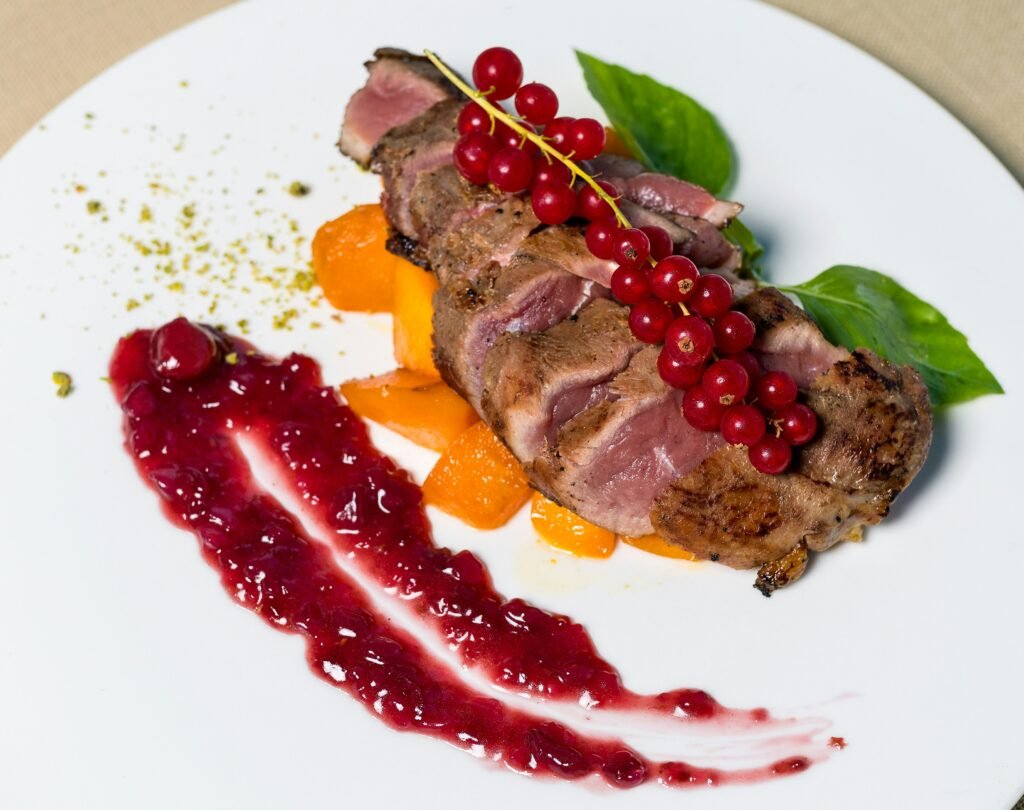
Kettle Grills and Heat
Design and Heat Circulation
Kettle grills are designed with a rounded, kettle-shaped body, which aids in heat circulation. This unique design promotes efficient airflow, allowing the heat to circulate and cook the food evenly. By adjusting the vents at the bottom and top of the grill, users can control the amount of oxygen entering the grill and regulate the heat. This design ensures that heat is evenly distributed, providing consistent cooking results.
Charcoal Usage
Kettle grills are commonly used with charcoal as the heat source. Charcoal briquettes or lump charcoal, when ignited, provide the necessary heat for grilling. To achieve optimal heat and good airflow, it is important to arrange the charcoal properly. The charcoal should be placed in a mound or on one side of the grill, allowing for both direct and indirect heat zones. The arrangement of charcoal influences the heat distribution and cooking techniques employed on the kettle grill.
Temperature Control
The vents on kettle grills play a crucial role in temperature control. By adjusting the vents, grillers can regulate the airflow, which in turn affects the intensity of the combustion and the heat output. Opening the vents allows more oxygen to enter the grill, increasing the heat, while closing them restricts airflow, reducing the heat. This control enables grillers to adjust the temperature according to their cooking needs, ensuring precise and consistent results.
Pellet Grills and Heat
Understanding Pellet Combustion
Pellet grills rely on the combustion of wood pellets to generate heat. Wood pellets, typically made from compressed sawdust or other wood by-products, serve as the fuel source. When the pellets are fed into the fire pot, an induction fan provides the necessary airflow for combustion. The pellets ignite, and the resulting flames produce the heat required for grilling. Pellet grills are known for their ability to impart a smoky flavor to food, making them a favorite among barbecue enthusiasts.
Induction Fan and Heat Dissemination
Pellet grills feature an induction fan that facilitates combustion and ensures efficient heat dissemination. The fan supplies oxygen to the fire pot, maintaining a steady blaze. This continuous combustion process creates a consistent flow of heat throughout the grill. The induced airflow also aids in the efficient burning of the wood pellets, maximizing heat production. The combination of the induction fan and controlled combustion ensures even cooking and temperature regulation in pellet grills.
Automatic Temperature Regulation
Pellet grills are equipped with a digital temperature controller, allowing users to set their desired cooking temperature accurately. The controller regulates the feed rate of wood pellets and adjusts the induction fan speed to maintain the desired temperature. This automatic temperature regulation ensures precise heat control, eliminating the need for constant monitoring and manual adjustments. Pellet grills provide convenience and reliability, allowing grillers to achieve consistent results with minimal effort.
Overall Differences in Heat Production
Comparing Heat Levels
Different types of grills vary in their heat production capabilities. Gas grills, powered by propane or natural gas, tend to provide high heat levels, ideal for searing and achieving quick cooking times. Charcoal grills offer intense heat, allowing for high-temperature grilling and authentic smoky flavors. Electric grills provide consistent and even heat, suitable for precise cooking with customizable temperature settings. Portable grills may vary in heat levels depending on the fuel source, butane-powered grills generally offer high heat outputs. Each type of grill provides a unique heat level, catering to individual preferences and cooking styles.
Variations in Heat Control
Heat control capabilities differ among grill types. Gas grills offer precise control through the adjustment of burner knobs, allowing users to fine-tune the heat intensity. Charcoal grills provide temperature control through the manipulation of air vents, regulating the oxygen flow to the coals. Electric grills have customizable temperature settings, providing users with precise and consistent heat control. Portable grills may have limited heat control options depending on the design and fuel source. The variations in heat control allow grillers to adapt their cooking techniques and achieve optimal results.
Differences in Heat Distribution
Heat distribution is another aspect that varies across different grill types. Gas grills typically provide even heat distribution due to the presence of multiple burners and the use of flame tamers. Charcoal grills may have more localized hotspots, requiring careful placement of the food for even cooking. Electric grills offer uniform heat distribution due to the direct contact between the heating elements and the cooking surface. Portable grills may have varying heat distribution patterns, depending on their design and fuel source. Understanding the differences in heat distribution enables grillers to utilize their grills effectively and ensure consistent cooking results.
Heat Management for Optimal Cooking
Understanding Grill Zones
Grill zones play a crucial role in heat management and achieving optimal cooking results. Most grills have different heat zones, which can vary in temperature intensity. For gas grills, each burner can be considered a separate zone, allowing for multiple cooking areas with varying temperatures. Charcoal grills can also create heat zones by arranging the coals on one side of the grill. Understanding the various heat zones enables grillers to employ different cooking techniques simultaneously, such as searing on high heat and slow cooking on lower heat.
Controlling Heat for Different Types of Food
Effective heat management is essential when cooking different types of food. Some ingredients require high heat for quick searing, while others benefit from slower, indirect cooking. Understanding the heat requirements for various foods allows grillers to adjust the heat levels accordingly. Gas grills offer precise temperature control for versatile cooking options. Charcoal grills can create both direct and indirect heat zones, providing flexibility. Electric grills allow users to set specific desired temperatures, catering to a range of cooking requirements. Adapting heat management techniques ensures the best results for every dish.
Grill Lid: To Open or Close?
The use of the grill lid is a topic of much debate among grill enthusiasts. In general, keeping the lid closed while grilling is recommended, as it helps to retain heat and maintain a consistent cooking temperature. Closing the lid creates an oven-like environment, ensuring even heat distribution and preventing excessive heat loss. However, there are exceptions to this rule, such as when searing food or when using direct heat methods that require constant monitoring. Understanding when to open or close the grill lid is crucial for achieving the desired cooking results, whether it be mild smoking or intense grilling.
In conclusion, barbeque grills produce heat through various mechanisms depending on the type of grill. Gas grills utilize propane or natural gas to generate heat, offering efficient heat distribution and precise temperature control. Charcoal grills rely on the combustion of charcoal, providing intense heat and the classic smoky flavor. Electric grills employ resistive heating elements for even heat transfer and consistent cooking. Portable grills offer versatility with different fuel sources and heat transfer mechanisms. Kettle grills ensure efficient heat circulation and come with temperature control through vent adjustments. Pellet grills utilize wood pellets and automatic temperature regulation for smoky flavors and precise cooking control. The differences in heat production, heat control, and heat distribution among these grills allow for a wide range of cooking techniques and customizable results. Understanding heat management techniques, grill zones, and the role of the grill lid further enhances the grilling experience and ensures optimal cooking results. So, grab your favorite grill and get ready to enjoy the delicious flavors and aromas of outdoor cooking.
